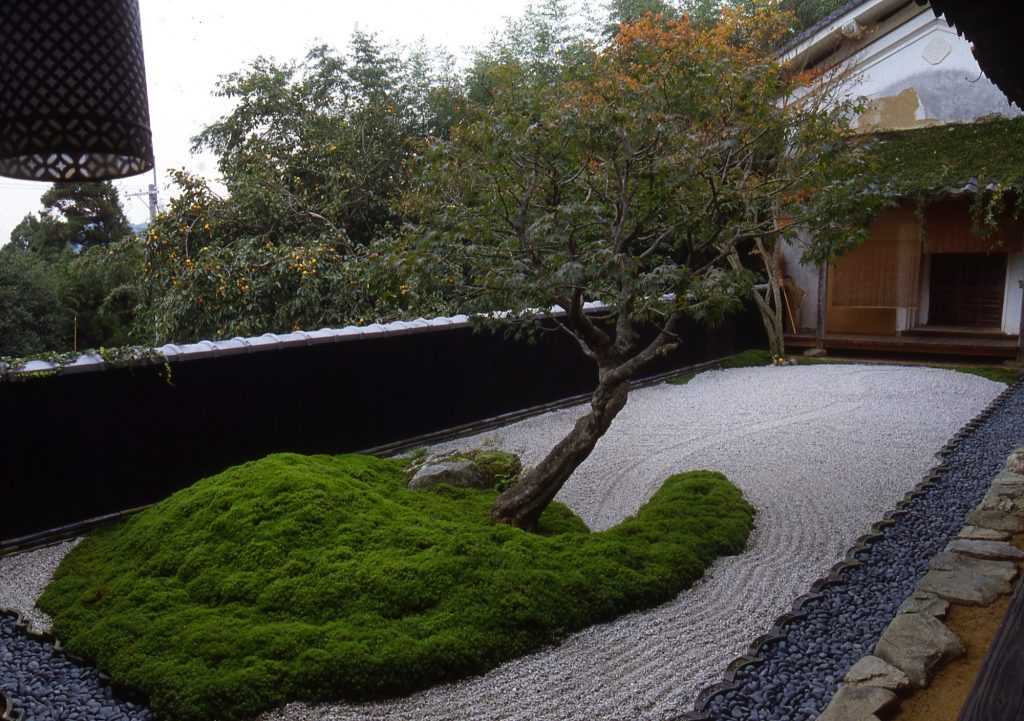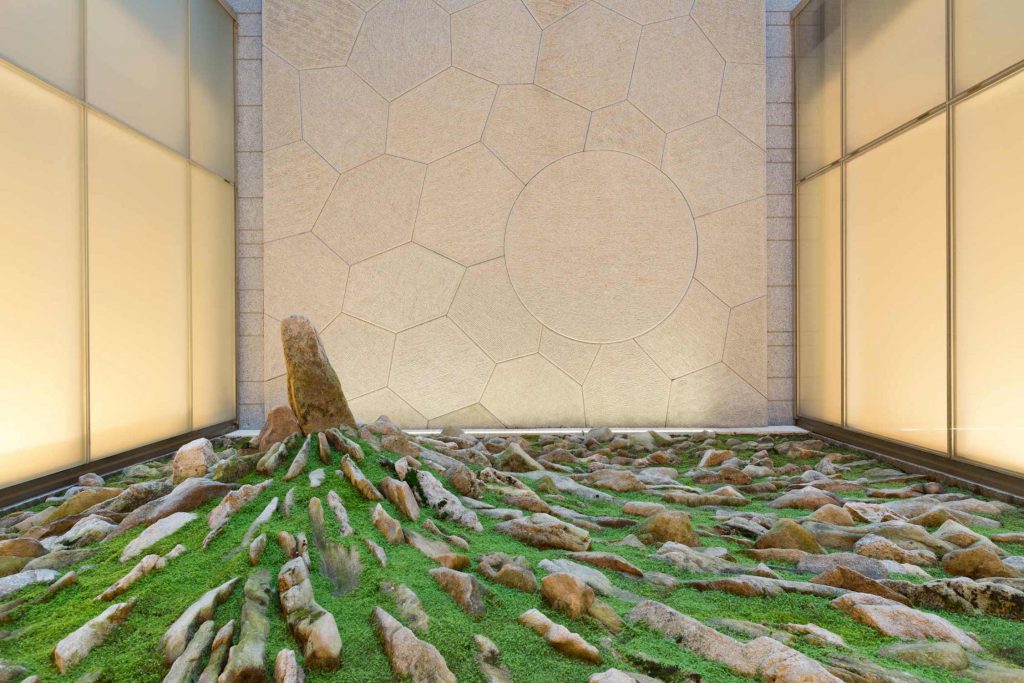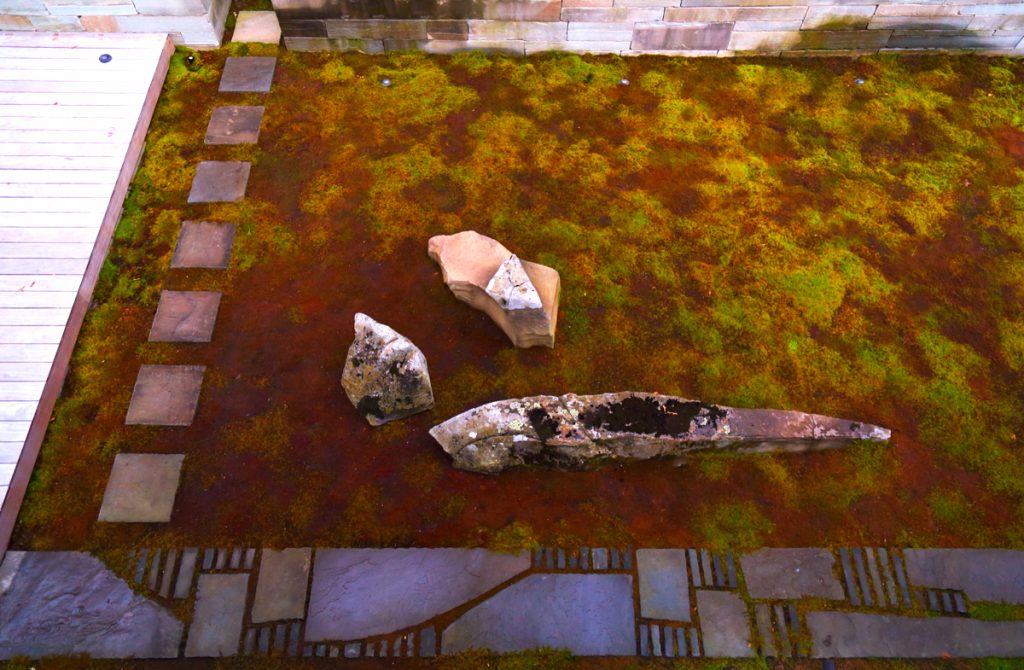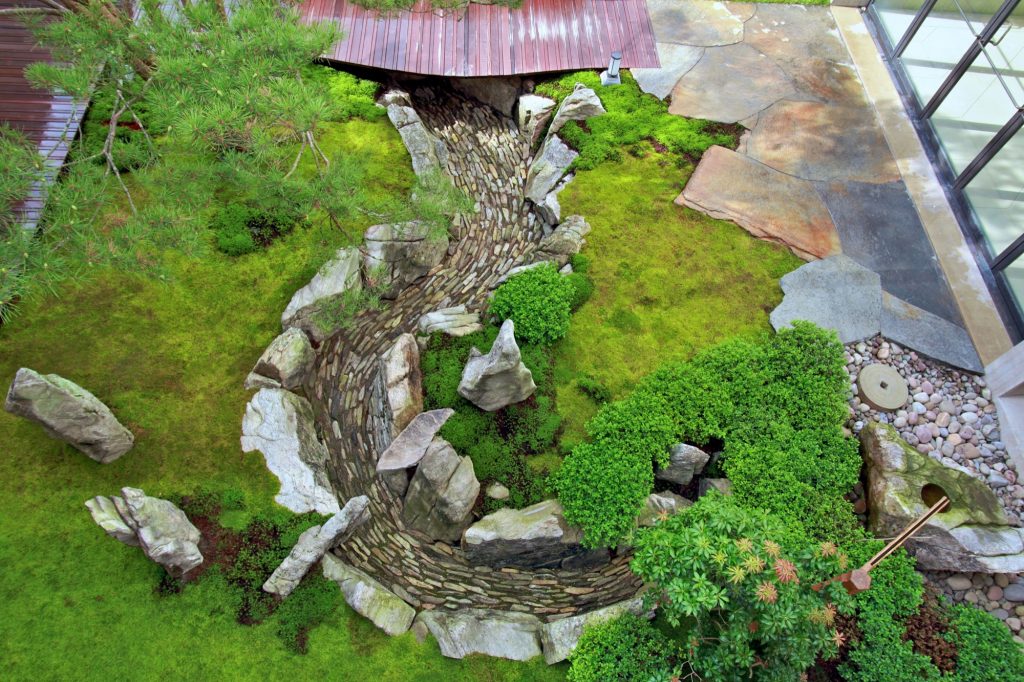By Marc Peter Keane
In Japan there is a highly sculptural and enigmatic form of garden known as karesansui that evokes a scene of the natural world — a landscape or seascape — through the restrained use of boulders, some plants, and at times raked gravel. The word karesansui is written with the three characters for dry-mountain-water 枯山水, in which ‘mountain-water’ means ‘nature,’ and ‘dry’ refers to the fact that water in the garden is represented symbolically through patterns of stones. Simply put, karesansui gardens are abstract, sculptural representations of nature that at times have an allegorical meaning incorporated into their design as well. Traditionally, these gardens were informed by a Buddhist and Taoist understanding of the natural world. It is my particular interest as an artist to create contemporary versions of this traditional art form by incorporating contemporary ideas of the structure of the natural world and the human presence in it.

Spiral Garden, Kyoto, Japan Built in Kyoto’s oldest extant residence, Spiral Garden uses moss and white sand to express the basic spiraling quality of nature. Garden design by Marc Peter Keane

Thrust!, Manhattan NY The stones and moss evoke the upward thrusting of tectonic plate movement. Contemporary garden design by Marc Peter Keane

Dream Islands Garden, Stone Ridge NY The stones and moss represent particles arising from a field of energy (like the essential Daoist elements of nature — yang and yin). Contemporary garden design by Marc Peter Keane

Tiger Glen Garden, Ithaca NY Based on the “Three Laughers of the Tiger Glen” parable, this garden abstracts the tale of three men who overcome religious differences to find a unity of friendship. Contemporary garden design by Marc Peter Keane.
Landscape architect Marc Peter Keane resides in Kyoto and works internationally. https://www.mpkeane.com/

Comments